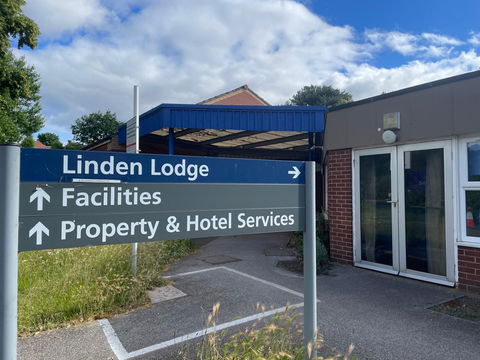In this article, we’ll explore how smart controls are driving decarbonisation in the NHS, increasing energy efficiency while causing minimal disruption to patients. We'll also examine a real-world example at Nottingham University Hospital NHS Trust’s.

In 2023-4, NHS England reported total energy usage across the NHS reached 11.1 billion kWh. To meet its goal of achieving Net Zero direct emissions by 2040, with an 80% overall reduction by 2028-2032, the NHS faces a significant challenge. The good news? Smart building controls offer a viable solution.
Linden Lodge site, where these technologies are cutting energy costs while enhancing patient care.
Getting hospitals to decarbonise
The NHS is one of the largest emitters in the UK, responsible for nearly 40% of the carbon produced by the public sector. While the NHS has committed to reaching Net Zero by 2040 for the emissions it directly controls, our own research found that one in three Trusts do not have a clear roadmap in place to meet targets, nor do they measure their carbon footprint. Action is needed—and soon.
Priority number one for all NHS Trusts must be securing ways to improve energy efficiency.
Enter smart monitoring solutions — systems that leverage the Internet of Things (IoT) to collect real-time data from connected devices, analyse it using advanced algorithms, and provide actionable insights. These solutions can be integrated with both existing and older Building Management Systems (BMS) to identify areas of energy waste and reduce harmful emissions. Data from these systems give building operators the power they need to optimise energy use and make necessary adjustments.
If the tech is available, why hasn’t it been widely implemented? Since the pandemic, the NHS’s attempts to decarbonise have been delayed by a backlog of maintenance activities. The bill for these works has risen to £13.8 billion, a figure that exceeds the entire annual running costs of the NHS.
Regardless of the backlog, facilities management and engineering teams must avoid any disruption to patient care while conducting maintenance, repairs, upgrades or retrofits. The NHS can’t afford downtime to critical infrastructure in case it affects the use of surgical theatres, ICU wards, and other critical health centres. Therefore, the NHS must take meticulous steps to ensure that upgrades, retrofits, and repairs do not affect patient care.
Smart hospitals
The good news is that sustainability in NHS buildings and estates can now be significantly improved without any disruption to patient care thanks to new technologies. By adopting smart building tech, such as management software and IoT monitoring devices, hospitals can reduce energy waste, lower carbon emissions, and create a more comfortable environment for both patients and staff.
A combination of digital tools will create a smarter and fully connected healthcare estate that provides an unprecedented level of insight into a site’s activities. By measuring and collecting data in real-time, healthcare leaders can identify opportunities to drive greater efficiencies and improve facility use. This visibility into assets, people, activities, and workflows enhances understanding and enables targeted efficiency improvements. The accumulation of data will help fine-tune building operations across NHS estates and support the transition to a dynamic, flexible energy system capable of integrating renewables. Once smart infrastructure is in place, artificial intelligence (AI) can be leveraged to provide further insights, cost efficiencies, and automation.
Not only can this technology be used to monitor and control HVAC, lighting, and other building functions that conserve energy, but it can also enhance patient comfort and wellbeing. Building managers can automate environmental settings based on IoT sensors and other monitoring systems, allowing for personalised room conditions. For patients, the ability to adjust temperature and lighting is a game-changer, while staff benefit from fewer manual interventions, enabling them to focus on delivering primary care.
Real-world use cases
The NHS is taking steps into smart technology, building controls, and IoT devices to improve patient experience and energy efficiency at Nottingham University Hospitals NHS Trust’s Linden Lodge site. These technologies are being tested with promising results.
New innovations include voice-activated environmental room controls and private temperature settings, giving patients greater independence over their environment. Additionally, staff can use an app to locate equipment within the building, check room occupancy, and book spaces and devices efficiently. This reduces unnecessary delays and improves operational efficiency.
By alleviating pressure on busy staff, hospitals gain more time to focus on clinical care. At the same time, meticulous planning and delivery at Linden Lodge ensured that there was no impact on patient care while the retrofit took place, eliminating downtime in a critical healthcare environment.
Smart building controls are key to helping NHS estates meet their Net Zero targets. By harnessing real-time data, facilities and operations teams can enhance operations, streamline maintenance, and carry out repairs with minimal disruption. This data also provides a crucial foundation for reducing emissions, implementing effective decarbonisation strategies, and transitioning to renewable energy. Additionally, integrating occupancy data with automation can optimise environmental conditions, even allowing patients to adjust settings themselves. Most importantly, these innovations free up healthcare professionals to focus on patient care, ultimately supporting a more sustainable and efficient health service.
